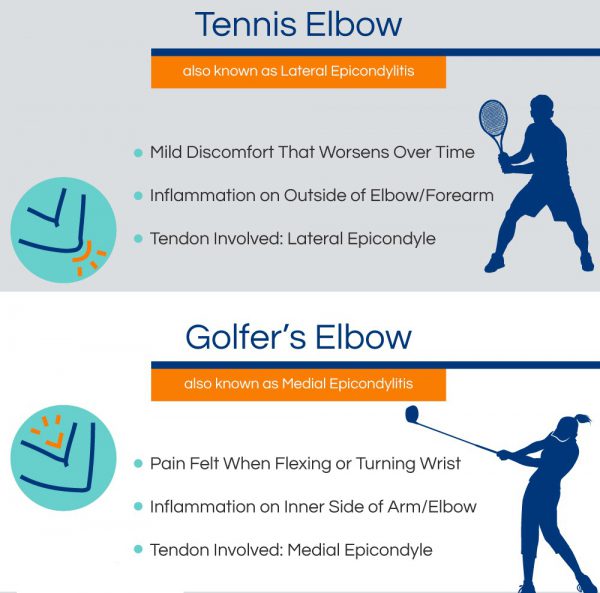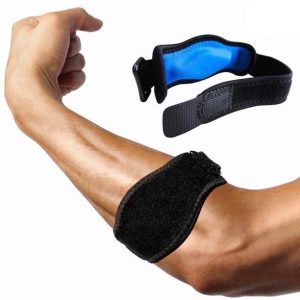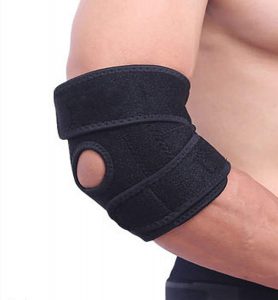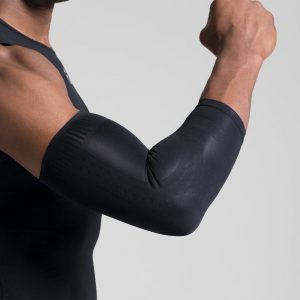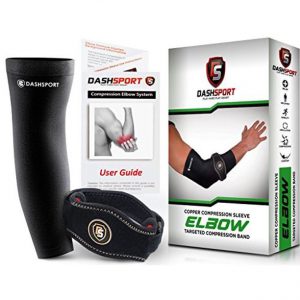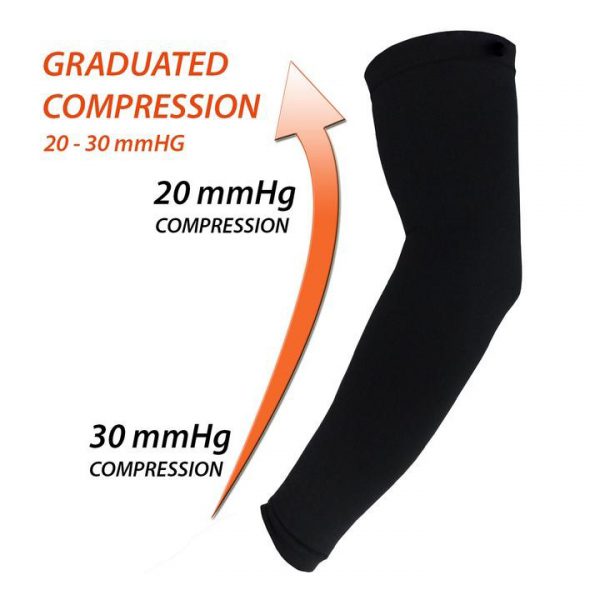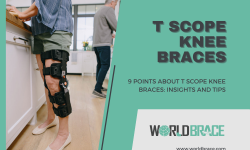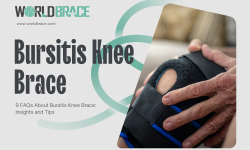BEST elbow brace Supplier in China
WorldBrace is the manufacturer of choice for high-quality elbow braces in China since 2001. We offer a one-stop elbow brace solution for your business.
Consider purchasing at WorldBrace company. We have a strong R&D team to design, develop, manufacture, and sell the best quality elbow braces. We have been the trusted Chinese factory of elbow braces for more than 20 years. WorldBrace has the full elbow support line including tennis elbow support, tennis elbow brace, elbow support brace, elbow strap, elbow sleeve, elbow immobilizer, elbow compression, elbow brace, etc.
If you are looking for elbow support suppliers and wholesalers? Don’t hesitate to contact us to drive your brand’s growth. Contact us about your custom elbow support requirements.
Custom elbow brace Manufacturer
Best Elbow Supports Wholesaler
- Low MOQ from 1000 PCS with logo
- Products conform to EU and FDA standards
- Pass through Walmart, Target audit
- ISO9001, GMP Certification
- Custom elbow braces samples in 7 days
- Over 20 years of elbow support OEM/ODM/OPM experience
The Ultimate Guide For Custom Best elbow brace
If you experience elbow pain both on and off the tennis court, you’re not alone. Playing a lot of tennis or using your arms for various activities for a long time can lead to tennis elbow.
However, no two tennis elbow braces are the same. The tennis elbow brace that works best for you may not suit your doubles partner. This guide highlights the best tennis elbow braces based on their comfort, functionality, durability, and overall value. Our goal is to help you find the best elbow support for your needs.
What is tennis elbow?
Tennis elbow is an overuse injury when tendons (the tissues that connect muscles to bones) are overloaded, leading to inflammation, degeneration and potential tearing. It usually affects tennis players with too tight grips. But anyone can develop this painful condition, medically known as lateral epicondylitis.
Many athletes have pain inside the elbow (golfer’s elbow) or the outside of the elbow (tennis elbow). Along the forearm, muscles are grouped to the thumb side of the little finger side of the arm. Several muscles attach to the elbow in one common tendon on the outside of the elbow (common extensor tendon) ( see image below left), and another large group of muscles attaches to the inside of the elbow (common flexor tendon). At these tendon sites, many people experience pain from using one muscle group more frequently than others, such as in certain sports situations such as the tennis backhand or golf swing.
Another common location of pain, especially in throwing athletes such as pitchers, is along the elbow’s inner side and the UCL (ulnar collateral ligament). See the image below right.
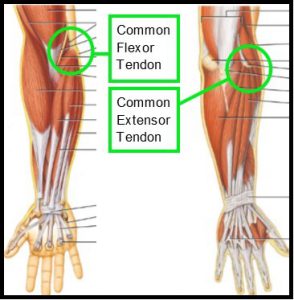

What's the difference between tennis elbow and golfer's elbow?
Lateral epicondylitis commonly referred to as “tennis elbow,” refers to the tendons’ inflammation that connects the forearm muscles to the outside of the elbow. Symptoms include pain or burning on the outside of the elbow and reduced grip strength. As the name suggests, tennis elbow is common among athletes who play tennis and other racket sports. However, 90% of people affected by tennis arms are craftsmen, musicians or PC users, not tennis players!
Medial epicondylitis, commonly referred to as “golfer’s elbow,” refers to inflammation of the tendon that connects the forearm muscles to the bony mass on the inside of the elbow. Symptoms include pain, stiffness, weakness, or, in more severe cases, numbness and tingling that originate from the inside of the elbow and radiate through the wrist and hand. A golfer’s elbow is the norm for golfers, but it affects tennis players and others who repeatedly clench their wrists and hands.
Who need a tennis elbow brace?
Anyone who regularly uses their forearm, wrist, or hand for repetitive activities needs a tennis elbow brace.
- Bowlers
- Fencers
- Golfers
- Tennis
- Squash
- Pickleball
- Racquetball players
- Weightlifting
- Basketball
- Push-ups
- Javelin throwers
People who work in certain professions also need tennis elbow brace:
- Assembly line workers and auto mechanics
- Butchers and chefs
- Carpenters, cleaners, painters, and plumbers
- Dentists
- Gardeners and landscapers
- Manicurists
- Musicians
When to wear tennis elbow brace?
While the elbow is not as prone to injury as weight-bearing joints like the knee and hip, it can sustain many reasonably serious injuries. Many of these injuries can be treated in part with an elbow brace. If you have the following symptoms, you can consider wearing an elbow brace.
- Elbow tendonitis brace
- Elbow brace for ulnar nerve
- Elbow bursitis brace
- Hyperextended elbow brace
- Elbow brace for cubital tunnel syndrome
- Carpal tunnel elbow brace
- Ucl injury elbow brace
- Elbow extension brace
- Post-op elbow brace
- Dislocated elbow brace
- Elbow immobilizer brace
- Arm brace for broken elbow
- Lateral epicondylitis
- Elbow brace for pinched nerve
- Elbow brace for torn ligament
How do tennis elbow braces do?
Tennis elbow braces relieve stress on the tendon where it meets the bone, usually the softest spot. This allows the sore area to rest, reducing pain during performances and allowing you to throw or swing the ball first.
Elbow braces work the same way as most other orthopedic braces. Elbow braces offer three main benefits to elbow injuries; compression, support, and heat therapy.
Compression
Many elbow braces provide pressure therapy for the joint and upper forearm. This compression absorbs the force transmitted through the soft tissue to the pain point outside the elbow.
Support
The elbow brace also provides support to the injured area and surrounding structures. The support of an elbow brace helps keep the joint in place after an injury, protecting the elbow from moving around or stressing it limiting the risk of aggravating the injury. Many elbow braces also change the angle at which the tendons work. This, in turn, changes the direction of the force exerted by the joint and relieves symptoms of conditions such as tennis elbow and golfer’s elbow. This gives the injured area time to recover.
Heat therapy
A final advantage of elbow braces is that they often heat the area by covering the joint and keeping it warm. Hyperthermia promotes blood flow and helps muscles relax. The warmth dilates blood vessels, promotes blood flow, and helps sore and tight muscles relax, which can also help reduce pain. In addition, we can use additional hot gel packs or cold gel packs to increase the effect.
Elbow braces types
There are several different elbow braces to choose from, and which one you choose depends on the type of injury, its severity, and where you are in the recovery process. We will briefly discuss these types below.
Tennis Elbow Strap
These braces consist of a strap that fits a few centimeters below the elbow on the upper forearm. The strap has a pad held in place with a hook-and-loop clasp and applies direct pressure to the tendon. Stress changes the strain of the affected tendon and reduces vibration. This type of stand allows you to adjust the pressure to your comfort level.
It also allows more freedom of movement than compression cuffs, dual supports or combination braces. Not all of them, but many of them are one-size-fits-all braces, which can be a problem if you’re smaller or larger than average.
Advantages: If installed correctly, they can be applied precisely to the desired point.
Disadvantages: Sometimes it’s hard to find the right place and may move.
Dual elbow support
These braces have two straps that attach below and above the elbows. They reduce mobility and comfort but are often used to immobilize the elbow area when the injury causes pain beyond normal tennis elbow. The applied pressure is not as targeted as the belt style, and this brace does not provide the range of motion or improved circulation that a compression cuff brings. However, it is cheap and easy to put on and take off.
Compression elbow sleeve
This elbow sleeve puts pressure on the affected tendon while supporting the entire elbow joint. Models with stepped compression apply even pressure on the joint and reduce the stress on the sleeve opening. The material used to make the arm compression sleeve also helps keep the joints warm aids mobility and prevents pain while improving blood circulation. The sleeve provides slightly less mobility than a strap brace, but some people like the extra coverage and joint stability.
The sleeves provide lightweight support and are easy to put on and take off. This tennis elbow brace can be easily worn under clothing without being too bulky or obtrusive.
Compression/strap combination elbow support
This type of stand utilizes the best of both designs. Some models consist of two separate parts – a compression sleeve and a strap.
This design allows you to either individually or together for more targeted pain relief. Combination models provide optimum versatility, support and stability for those who need to wear the brace every day.
The materials in a tennis elbow brace
Tennis elbow braces are usually made of several different materials.
Neoprene
Neoprene is commonly used in tennis elbow supports. Neoprene provides breathability and moisture absorption. Neoprene also resists stretching, making it a very durable material.
Nylon and Spandex
Blends of nylon and spandex are also common in tennis elbow braces. This material combination is the best choice for extensive use of lightweight support for temperature regulation. Nylon and spandex have unique moisture-wicking fibers that keep your arms dry, even on hot days on the tennis court.
Nylon Mesh
Some tennis elbow supports are made of nylon mesh to help regulate the player’s body temperature. This material will maintain flexibility around the elbow joint while allowing airflow to prevent overheating.
How to choose the best tennis elbow brace?
Seam construction
Seams are a common source of skin irritation due to the pressure required to treat pain. Heavy round seams penetrate deep into the skin. Look for flat seam structures that limit local pressure. The end of the compression sleeve can also cause discomfort due to uneven pressure. Look for sleeves with flexible seams and graded compression at the opening to prevent circulation issues.
Comfort
When you’re shopping for a tennis elbow brace, you want to make sure that it fits comfortably and stays on your arm, so it’s helpful to pay attention to the materials used and read past customer reviews that can give clues as to how comfortable it is.
When you’re shopping for a tennis elbow brace, you want to make sure it fits snugly and stays on your arm, so it’s helpful to pay attention to the materials used and read past customer reviews that can give clues as to how comfortable the product is.
Materials
There are many materials for making tennis elbow brace, but Neoprene is mainly used. Neoprene is commonly used to make a variety of braces because it is flexible and strong enough to provide stability. It is used to make effective strap and compression braces.
Size
One-size-fits-all braces may be easier for manufacturers, but they don’t always give you the best option. If you’re medium in size, a one-size-fits-all model might work. However, small, medium and large models offer better fit and pain relief for optimal compression and pain relief. Some more expensive braces come in seven sizes for a more personalized fit. Follow the manufacturer’s instructions and take careful measurements to find the bracket that provides the best support for your frame and body size.
Stabilizing technology
Some compression/strap combo braces have built-in stabilization pads that massage your elbows as you move. Others, usually double-braced models, limit the range of motion to reduce pain.
Colour
Braces aren’t known for their colorful patterns, but that doesn’t mean you can’t find one with a design that appeals to you. Although some braces come in neutral beige, black, white, and gray with complementary colors are the most common choices.
How much are tennis elbow brace prices?
Cheap
Basic strap and compression braces start at less than $15. Strap braces have a compression pad that must be placed over the affected tendon. Compression sleeves at this price point provide low-level compression and may not offer graded compression.
Mid-range
Between $15 and $30 are strap braces with flat seams and compression braces that apply even pressure across the entire elbow joint. Dual brace models can be found at this price.
Expensive
Combo braces and brace models start to appear in the $30 to $50 range. You may also see dual support models that can be used for heat or cold therapy.
Remark: If you buy bulk the elbow brace from the manufacturer, the price is only 1/3 to 1/5 of the retail price.
Where to place tennis elbow support?
In the video below, explain where to put a tennis elbow brace.
How to make a custom elbow brace?
The major manufacturing production processes of eblow braces are:
1. Sourcing Raw Material → 2. Neoprene Slicing → 3. Composite & Lamination → 4. Embossed & Perforated (optional) → 5. Pattern Making → 6. Tailoring & Cutting → 7. Printing → 8. Sewing → 9. Finishing Quality Control → 10. Packing And Dispatch
It usually takes 30 days more production lead time to order from raw material to final shipment ready. For more details you want to know, you can contact WorldBrace Team for technique support.
Where to buy an elbow support?
Tennis elbow is a common condition, so you’ll find various options from a wide variety of retailers.
Here are some places that usually carry them:
- CVS
- Walgreens
- Walmart
- Target
- Amazon
One of the beneficial things about shopping at your local store is that you can take the stand out of the box and try it on to see if it fits. It’s also a great way to familiarize yourself with braces before buying them online.
But if you’re going to customize a tennis elbow brace, you can find elbow brace manufacturers in China, such as WorldBrace.
The best elbow brace manufacturer in China
If you are looking for a custom elbow brace or have any queries about the custom elbow support, please feel free to contact us through email. We have experts that are always ready to assist you and will contact you back within 24 hours to tell you about the possibility of customizing your elbow brace.
WorldBrace is the best elbow brace manufacturer in china. Contact us today and find out how, together, we can create a unique elbow brace that is guaranteed to impress.
FAQ
Are elbow braces with hot/cold insert pockets okay to use while playing sports?
These elbow braces are designed for therapeutic use, not during exercise. However, they allow you to have heat or cold therapy while doing your normal activities throughout the day.
How do I wash a tennis elbow brace?
Because you’re wearing the elbow brace directly on your skin, it inevitably comes into contact with sweat and dirt from your body. For this reason, it’s important to choose washable elbow braces.
For products with Velcro straps, pads, or inserts, remove them if possible, or attach them securely to the stand provided. Machine wash your stand in cold water using a mild or delicate cycle. Wash alone with an additive-free laundry detergent (do not use fabric softener or wool). Lay the support flat and let it air dry; do not put it in the dryer. Proper washing and drying help your elbow braces retain their elasticity and original fit.
What color is better for an elbow brace?
Choosing the color best for you depends on the types of activities you do and where you do them. If you spend a lot of time playing outdoor sports, lighter colors will show dirt more easily than darker colors. If you run or exercise in hot temperatures, dark-colored compression sleeves will absorb more heat and may make you feel too hot. Otherwise, if you want fun colors or interesting graphics, your choices are numerous and a matter of personal preference.
How tight should a tennis elbow brace be?
The brace needs to put enough pressure on the tendon to change its function when force is applied. While compression sleeves and shoulder straps require tightness, they should never cut off your circulation, which can be manifested by a tingling or lack of sensation. Models in several sizes provide better pressure customization than one-size-fits-all models.
How to care elbow brace?
Hand-wash and air-dry your elbow brace regularly. Tennis elbow braces lose elasticity over time. According to the manufacturer’s instructions, a frequently worn stand may last two to three years if cared for. However, this time may be shortened if inappropriate braces are used extensively.
Tennis elbow braces lose elasticity over time. According to the manufacturer’s instructions, a frequently worn stand may last two to three years if cared for. However, this time may be shortened if inappropriate braces are used extensively.
How long to wear a tennis elbow brace?
The American Academy of Family Physicians (AAFP) recommends: “Use of an inelastic, non-articular, proximal forearm strap reduces pain and increases grip strength after three weeks. Support for up to six weeks also improves the patient’s ability to perform daily activities.”
In other words, it may take a while to realize the benefits of wearing elbow pads, so you may need to be patient.
Should I wear a tennis elbow brace at night?
Elbow braces are also sometimes called “elbow supports”—that is, they make it easier for the person wearing them to get around. This movement allows the support to affect the body and the healing process positively. However, the massage function and intermittent compression cannot be activated when you are still. For this reason, wearing a brace at night is ineffective. It is best to wear elbow braces when you are active during the day and relax your elbows at night.

